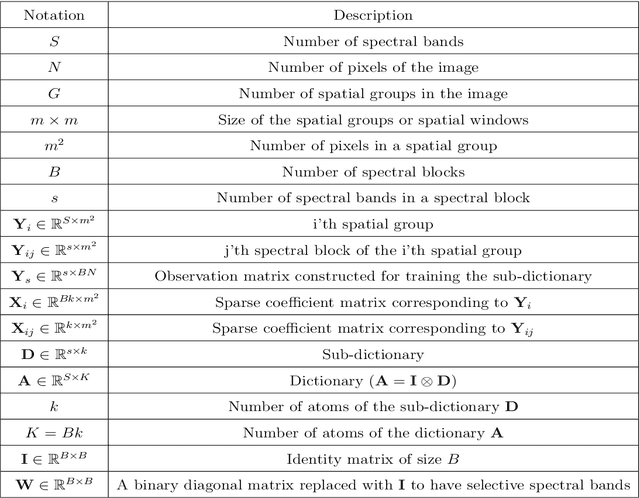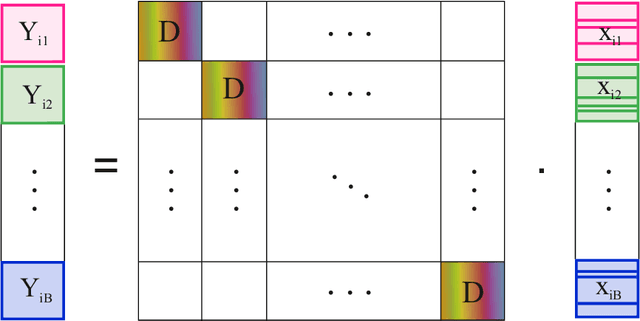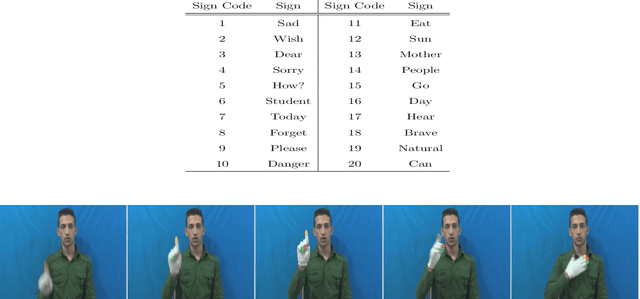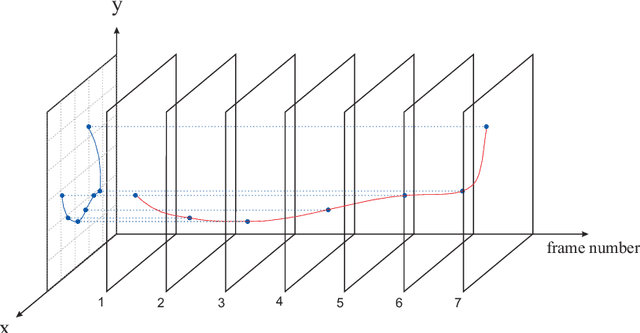Saeideh Ghanbari Azar
Hyperspectral Image Classification Based on Sparse Modeling of Spectral Blocks
May 17, 2020



Abstract:Hyperspectral images provide abundant spatial and spectral information that is very valuable for material detection in diverse areas of practical science. The high-dimensions of data lead to many processing challenges that can be addressed via existent spatial and spectral redundancies. In this paper, a sparse modeling framework is proposed for hyperspectral image classification. Spectral blocks are introduced to be used along with spatial groups to jointly exploit spectral and spatial redundancies. To reduce the computational complexity of sparse modeling, spectral blocks are used to break the high-dimensional optimization problems into small-size sub-problems that are faster to solve. Furthermore, the proposed sparse structure enables to extract the most discriminative spectral blocks and further reduce the computational burden. Experiments on three benchmark datasets, i.e., Pavia University Image and Indian Pines Image verify that the proposed method leads to a robust sparse modeling of hyperspectral images and improves the classification accuracy compared to several state-of-the-art methods. Moreover, the experiments demonstrate that the proposed method requires less processing time.
Trajectory-Based Recognition of Dynamic Persian Sign Language Using Hidden Markov Model
Dec 04, 2019



Abstract:Sign Language Recognition (SLR) is an important step in facilitating the communication among deaf people and the rest of society. Existing Persian sign language recognition systems are mainly restricted to static signs which are not very useful in everyday communications. In this study, a dynamic Persian sign language recognition system is presented. A collection of 1200 videos were captured from 12 individuals performing 20 dynamic signs with a simple white glove. The trajectory of the hands, along with hand shape information were extracted from each video using a simple region-growing technique. These time-varying trajectories were then modeled using Hidden Markov Model (HMM) with Gaussian probability density functions as observations. The performance of the system was evaluated in different experimental strategies. Signer-independent and signer-dependent experiments were performed on the proposed system and the average accuracy of 97.48% was obtained. The experimental results demonstrated that the performance of the system is independent of the subject and it can also perform excellently even with a limited number of training data.
 Add to Chrome
Add to Chrome Add to Firefox
Add to Firefox Add to Edge
Add to Edge